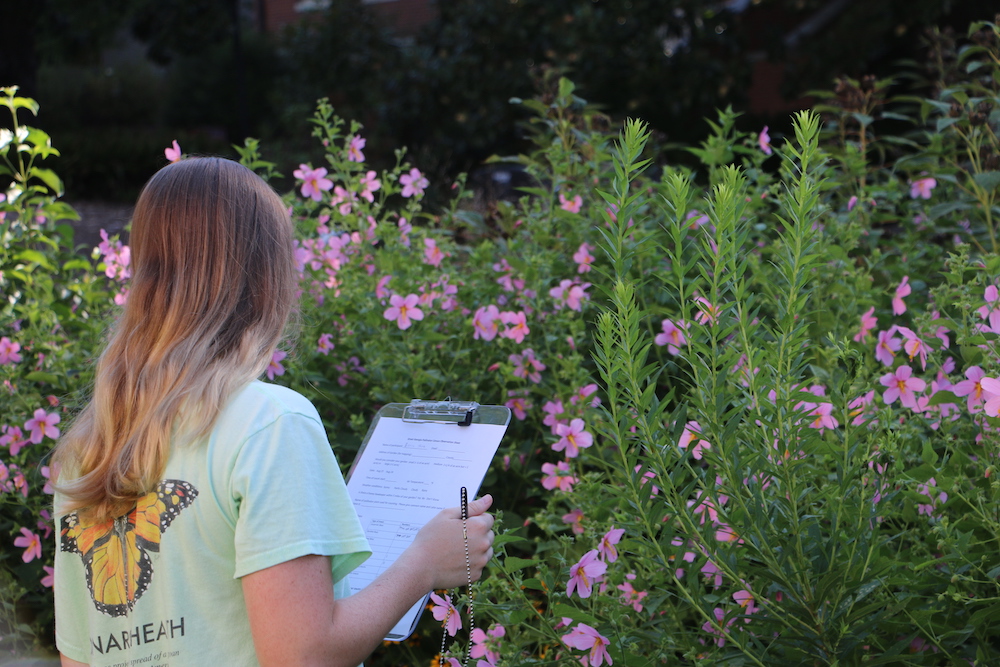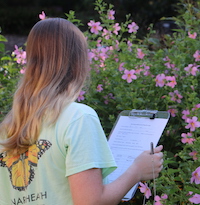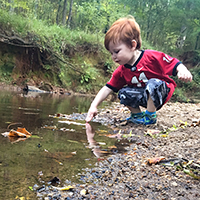Even before the COVID-19 pandemic, families and young people struggled to find time in their busy schedules to be outside. Coined in 2005 by Richard Louv, nature-deficit disorder is a nonmedical term used to describe the disconnect more and more humans are experiencing with nature. Hunter-gatherer and agrarian societies were directly tied to the land. With the industrial age and advancements in technology over the last two centuries, humans are spending less time outside and more time on electronic devices.
When young people spend time outdoors, they gain a greater appreciation for the natural resources around them. They can explore and be creative and curious — whether that means observing a worm wiggling on the pavement, looking at the different shapes of tree leaves or spending time digging in the dirt. A growing body of research suggests that there are numerous physical and mental health benefits to spending time outside, such as reduced stress, greater cognitive functioning and increased physical activity.
Technology is powerful. Children and youth can read books, listen to podcasts, access the news, watch educational videos and even play cognitive games. These devices have been a tool during this time of quarantine and social distancing, connecting friends and family members through online meeting spaces. With many school systems switching their delivery mode to a virtual or hybrid model, there is even more concern for young people to have intentional time for screen disengagement. The following are some easy ways to take breaks from screen time.
- Make time to be outside. Can youth take their devices outdoors for instruction time? Can they read a book sitting on a bench in the public park or build a homework fort in the backyard? Finding intentional ways for kids to be outside while completing their required studies can help provide clarity and focus.
- Schedule breaks. Sitting in front of a screen for too long can cause eye strain and anxiety. If children are participating in virtual education, consider building in time for breaks. Even a quick stretch or walk around the block can increase their focus once resuming a task. Using a timer or device to schedule breaks can add fun and spontaneity.
- Involve the entire family. Instead of a Friday night movie, plan a hike instead. Create a fun and healthy snack to enjoy on a blanket in the backyard instead of eating at the kitchen table. Could you meet a relative or friend at the park for a picnic dinner? Engage in a civic science project — like monitoring the weather — that families can complete together.
- Allow unstructured play. It’s great for kids to complete an outdoor scavenger hunt or try to identify birds based on their songs and calls, but allowing some unstructured playtime outside encourages exploration. If the environment is safe, have young people simply wander and use their observation skills. Turn over a fallen log and see what is living under there. Dig in a hole in the dirt and feel the soil. Run around and enjoy the natural surroundings.
At the beginning of the COVID-19 pandemic in the U.S., Richard Louv, co-founder of the Children and Nature Network, compiled a list of activities to help families at childrenandnature.org.
As with anything, having an intentional approach is the key to success. Start with small, incremental changes and track your family’s progress over time. Involve children and youth in the decision-making process — perhaps they have some ideas of their own. Helping young people to realize that technology can be beneficial but must be balanced with outdoor time is critical to their development.









